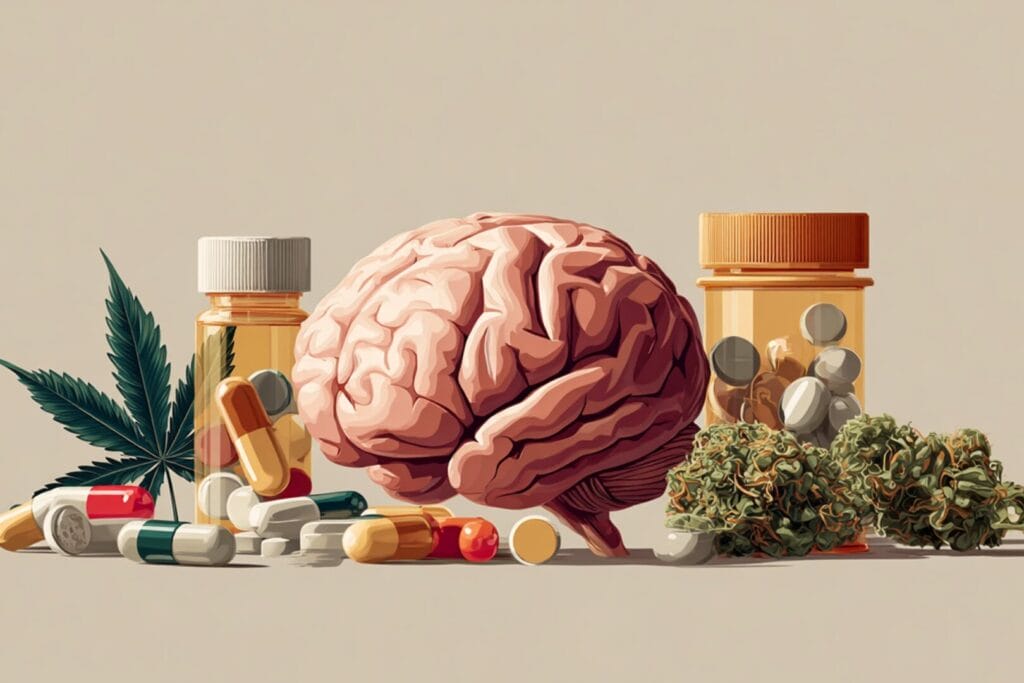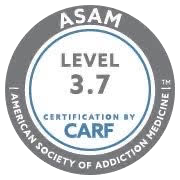What Is Suboxone?
Suboxone is the brand name for a prescription medication combining two substances: buprenorphine and naloxone. It is an effective medication for treating opioid addiction, dependency, and withdrawal.
What Does Suboxone Treat?
In 2019, an estimated 70% of drug overdoses were related to opioids—a 6% increase from the previous year. Unfortunately, the opioid crisis continues to affect millions of people’s lives each year. Opioid addiction treatments are vital in helping those impacted by this highly addictive substance.1
Fortunately, various forms of treatments, like Suboxone, have been developed to help people recover from opioid addiction. Suboxone is a medication used to treat opioid use disorder. Not only does it help prevent opioids from working in the body, reducing their addictivity, but it can also help manage and reduce the severity of the symptoms of opioid withdrawal.
How Does Suboxone Work?
As a combination medication, Suboxone is both an opioid partial agonist (buprenorphine) and opioid antagonist (naloxone). Buprenorphine is responsible for decreasing withdrawal symptoms and cravings, increasing safety in case of overdose, and lowering the risk of abuse. Naloxone can reverse an opioid overdose and block the effects of other opioids.
How Does Suboxone Help Addiction Treatment?
Proper treatment—and its availability—is crucial for those with opioid addiction to recover safely. Data between 2016 and 2018 shows a 142% increase in people receiving medication-assisted treatment at health centers funded by the Health Resources & Services Administration (HRSA).2
One of the reasons that Suboxone is so beneficial for addiction is its multifaceted treatment option. Because of the two substances that make up this medication, it can target addiction itself and simultaneously manage the symptoms of opioid use and withdrawal.
Suboxone Effects
Some of the elements Suboxone provides during addiction treatment include:
- Pain relief
- Calmness and overall well-being
- Reduced worry and stress levels
- Relaxation
Side Effects of Suboxone
Like any substance, Suboxone can result in side effects, even when taken as prescribed. Some of the side effects of Suboxone people may experience include:
- Joint and muscle pain
- Irritability
- Dilated pupils
- Insomnia
- Feeling jittery
- Diarrhea
- Flu-like symptoms
- Vomiting
- Sweating
Suboxone Withdrawal Symptoms
Despite its ability to reduce the symptoms of opioid withdrawal, Suboxone is still a substance that the body can grow accustomed to. As a result, a sudden stop in usage can result in withdrawal symptoms, although these won’t be as severe as other types of opioids. Some of the Suboxone withdrawal symptoms that may be experienced are:
- Nausea
- Headaches
- Muscle aches
- Insomnia
- Anxiety
- Psychological cravings for Suboxone
Benefits of Suboxone
One reason that Suboxone is highly recommended for opioid addiction treatment is because of its many benefits.
Increased Overdose Safety
When looking at Suboxone vs. Subutex, one of the most notable benefits is Suboxone’s ability to reverse an opioid overdose and decrease abuse by blocking the effects of opioids. This is because Suboxone combines buprenorphine with naloxone.
Some may know naloxone by the brand names Narcan and Evzio. It is commonly used in the instance of an opioid overdose, as it can rapidly reverse the symptoms.
Decreased Risk of Misuse
The chemical makeup of Suboxone provides a lower risk of misuse and addiction. This is because it doesn’t create the same euphoric sensations as other opioids, and its opioid antagonist properties change the way it interacts with the brain compared to other opioids.
Long-acting effects May Allow for Alternate-Day Dosing
Subutex is often viewed as an alternative to Suboxone. While we’ve already discussed how Suboxone has an increased overdose safety compared to Subutex, it also lasts longer, allowing for alternate-day dosing when appropriate.
Research shows that alternate-day dosing can be an efficient way to partake in medication-assisted therapy (MAT) while reducing the negative effects of the medication.6
Get Suboxone Treatment at San Diego Detox
Suboxone can be a good choice when searching for the right opioid addiction treatment. However, it is still an opioid, so it is important to undergo treatment with the help of a medical professional.
San Diego Detox provides professional care and compassion throughout each client’s recovery journey. Under the guidance of one of our certified staff members, clients will be able to partake in MAT with Suboxone to help alleviate withdrawal symptoms and restore balance in their lives.
Suboxone Dosage
The dosage for Suboxone varies from person to person because many factors contribute to what amount is needed. Below are some of the most notable determinants.
Type and Severity of Opioid Dependence
Suboxone is only effective when treating short-acting opioids, such as heroin, codeine, oxycodone, and hydrocodone. Depending on the severity, the dosage may start low and gradually be increased if withdrawal symptoms persist (usually occurring in more severe opioid addiction cases).
On the first day, the Suboxone dose can start at 2 mg of buprenorphine/0.5 mg of naloxone or 4 mg of buprenorphine/1 mg of naloxone sublingual (SL) and cannot exceed 8 mg/2 mg. On the second day and in future doses, no more than 16 mg/4 mg SL can be taken daily.3
One of the leading factors in Suboxone dosages is where clients are in their treatment and recovery journey.
Early Stage
In order for Suboxone to truly be effective, it should be taken twelve to twenty-four hours after the last opioid use. Thus, it is best prescribed when a client is experiencing opioid withdrawal symptoms, allowing the full effects of the medication to set in.4
Late Stage
Later in treatment, clients may not even need Suboxone anymore and instead can focus on a transition to medications like Subutex. Because Suboxone is geared to those with more risk for an overdose, such as those experiencing the severe cravings associated with withdrawal, it may not be necessary once this risk subsides.
Other Medical Conditions
Suboxone should be avoided by anyone who is still using opioids or has an allergy to either of the substances making up Suboxone. However, it is considered safe for pregnant women.5
Before beginning a treatment plan with Suboxone, people should discuss any medical conditions with their doctor.
Resources
https://www.niaaa.nih.gov/alcohols-effects-health/overview-alcohol-consumption/what-standard-drink
https://www.drugfreeworld.org/drugfacts/alcohol/short-term-long-term-effects.html
https://www.ncbi.nlm.nih.gov/pmc/articles/PMC2913110/
https://www.webmd.com/mental-health/addiction/understanding-alcohol-abuse-symptoms






